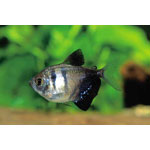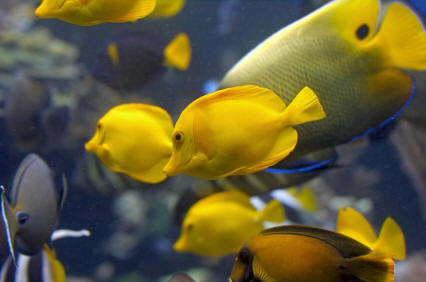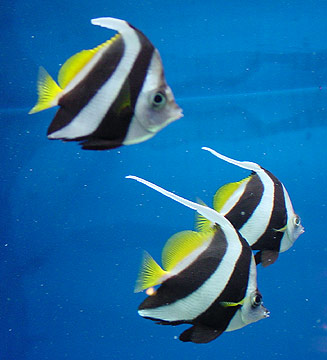Black Tetra

|
Scientific Name: Gymnocorymbus ternezi Price: Upon Request Origin: South America Family: Characidae NOT AVAILABLE NOW |
|
Other Names: White skirt assorted color, Black Widow Tetra, Black Skirt tetra, White Skirt Tetra, Gymnocorymbus ternetzi, Petticoat Tetra, Gold Skirt Tetra, White Tetra |
|
Technical Info
Temperature: 23 - 27 ℃
pH: 6 - 7.5
GH: 5 - 20
Max size: 8 cm
Min Tank size: 75 Ltr
Position in Aqua: Middle swimmer
Description
The White Skirt Tetra is a genetic morph of the Black Skirt Tetra. As far as care requirements go, the White Skirts are virtually identical to those of the Black Skirt Tetra. It has a roughly tetragonal body shape. Unlike Black Skirts, the White Skirt Tetra lacks stripes. They are very light and almost appear transparent. In motion, they appear fan-like. White Skirt Tetras are also commonly color died in captivity. Many of these fish are dyed by injecting them with dye using a needle and this will usually result in a decreased lifespan these fish. Some are fed dyed food to make them colorful, but this color is not permanent either.
Food
Virtually any kind of live, fresh, frozen, freeze dried, or flake foods are suitable. For optimal health, provide a variety of foods that include high quality flake foods, brine shrimp, any type of worms, as well as vegetable supplements such as spirolina.
Breeding
Female white skirts are generally larger than the males and have a rounder body. Males have a broader anal fin, and a narrower more pointed dorsal fin. Larger males will generally claim a territory that they will guard during spawning periods. Although they are egg scatters they prefer to spawn among fine-leaved plants, which should be provided in the breeding tank. Once spawning has occurred the parents should be removed, as they will consume the eggs. Eggs will hatch after approximately one day. The fry may be fed freshly hatched brine shrimp, egg yolk, or finely ground flake foods.
Compatible with
Peaceful, especially when kept in groups of at least 6 but preferably more; in smaller groups or individually it may become nippy of fins. Should not be kept with sedate fish such as angelfish, discus, gourami due to likely nipping. In a soft/acidic aquarium, compatible with other characins, dwarf cichlids, rasbora, danio, small catfish and loaches; in basic/alkaline aquaria, suitable companion to livebearers. May be seen chasing each other, but little or no harm is ever done.
Note
They will really appreciate a tank with live aquarium plants. The live plants will provide places of refuge and help make them feel more secure.

